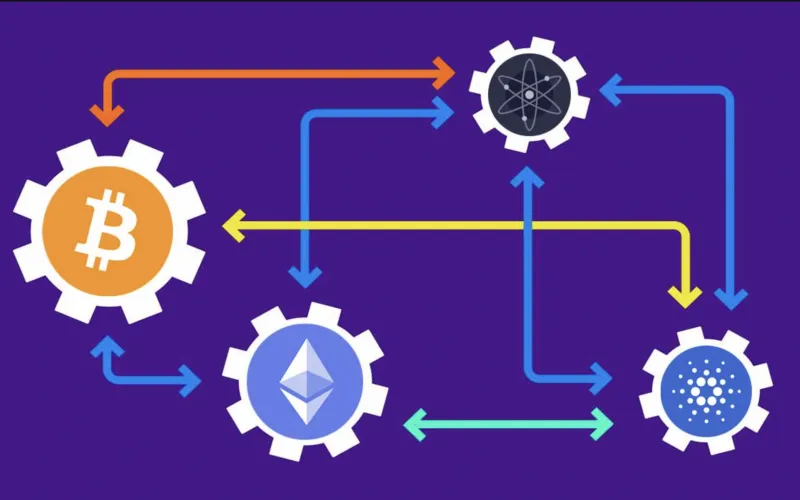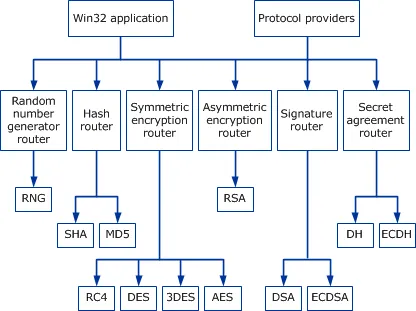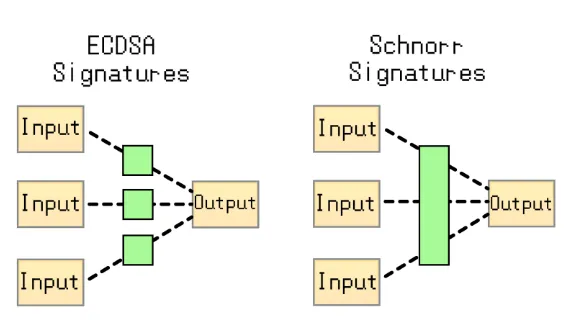Cardano's Valentine (SECP) Upgrade: A Closer Look
The SECP Valentine upgrade is here, and it's all about security and cross-chain interoperability. With new built-in functions in Plutus that support ECDSA and Schnorr signatures, developers will have an easier time building cross-chain applications that are both secure and interoperable.
In this article, we will take a closer look at the SECP Valentine upgrade, its significance in terms of cryptographic primitives, and how it will boost both security and cross-chain interoperability on Cardano.

Cryptographic Primitives Explained: Key Elements of Security for Data Protection

by Microsoft Learn
Cryptography is essential in blockchain technology because it provides trust, security, and privacy to blockchain networks. Blockchains can securely manage data and value by leveraging cryptographic primitives such as algorithms and rules.
Cryptographic primitives, which serve as the technology's building blocks, are at the heart of blockchain security. These primitives aid in the generation of public and private keys, digital signatures, and hash functions, all of which contribute to the confidentiality and integrity of data on the blockchain.
Understanding the importance of cryptographic primitives is essential for creating and maintaining a secure and trustworthy blockchain.
Schnorr Signatures and the Elliptic Curve Digital Signature Algorithm (ECDSA)

CryptoStars
Elliptic curves are a widely used approach for developing secure cryptographic protocols and applications that require digital signatures to verify encryption and decryption algorithms. These curves provide a comparable level of security to other methods with shorter keys and signatures.
The challenge of solving the discrete logarithm problem to achieve security is at the heart of elliptic curve cryptography. The goal of this challenge is to find the exponent k in the equation gk = h, where g and h are known values. The problem's complexity stems from the need to test many different values of k in order to find the right answer.
Elliptic curve cryptography provides strong security with smaller keys and signatures by leveraging the challenge of the discrete logarithm problem. Understanding the advantages of elliptic curves is critical for developing secure cryptographic protocols for blockchain and other applications.
Elliptic curve cryptography achieves its security by relying on the complexity of solving the discrete logarithm problem for large prime numbers. While a solution is technically attainable, the sheer amount of time and computational resources required to do so makes it unfeasible to break the encryption.
One of the most popular elliptic curves used in blockchain networks is secp256k1, which features two common signature schemes, ECDSA and Schnorr. Although Schnorr was initially developed as an alternative to ECDSA, it has become widely adopted in many blockchain platforms, including Bitcoin and Ethereum.
However, Cardano leverages EdDSA, which relies on the Edwards-curve Digital Signature Algorithm, utilizing the elliptic curve Curve25519 (or Ed25519) as its foundation. Unlike secp256k1, Ed25519 is a member of the safeCurves family, providing advanced security features.
It's crucial to comprehend the different elliptic curve options available, including their security features and various signature schemes. As blockchain technology continues to evolve and expand, selecting the right cryptographic protocols is critical to ensuring a secure and trustworthy network.
Cardano's requirement for SECP Elliptic Curves
The cryptographic protocols employed by other blockchain networks vary from those employed by Cardano, which requires Plutus DApp developers to invest more time, energy, and resources to implement the SECP elliptic curves standards in Plutus for using ECDSA and Schnorr signatures in other blockchains. This additional implementation can lead to potential security risks.
Fortunately, Cardano's primary signature algorithm, Ed25519, is the only built-in function currently available in Plutus. Without these built-in functions, ECDSA and Schnorr operations would be more time-consuming and costly. As a result, the Valentine upgrade introduces new built-in functions to Plutus to support ECDSA and Schnorr signatures in addition to Cardano's native signature.
It is critical for Plutus DApp developers to have the necessary tools and functions to create secure, efficient, and trustworthy decentralized applications. With this upgrade, Cardano enhances cross-chain interoperability while providing developers with more options to implement different cryptographic protocols in their applications.
Cardano's SECP Valentine Upgrade
The most recent SECP Valentine upgrade has added new built-in functions to Plutus that can handle SECP elliptic curves, such as ECDSA and Schnorr, which will now be available natively on Cardano. Experts thoroughly reviewed these new functions to ensure the highest levels of security. Plutus DApp developers will be able to choose from a variety of multi-signature and threshold signature designs as a result of this new standardization.
The Cardano Improvement Proposal (CIP-49), which closely oversees the motivation and specification of these primitives, provides detailed guidance and technical specifications for the new built-in functions. Plutus will be able to efficiently verify transactions from other blockchains that use ECDSA and Schnorr standards once the cryptographic primitives are integrated into the system.
The Plutus ecosystem is set to become even more developer-friendly with the SECP Valentine upgrade. By enabling Plutus to natively verify signatures generated in EVM sidechains, the upgrade streamlines the development process and improves cost, simplicity, and security.
The SECP Valentine upgrade aligns Cardano with a broader blockchain ecosystem, positioning it as a versatile blockchain platform. It is crucial to allow DApps on Cardano to communicate with other blockchain networks, creating cross-chain interoperability that enables users to access a broad range of services. With native SECP support, Cardano can provide a higher level of security while facilitating cross-chain interoperability. The upgrade will also offer better bridges and access to new tokens and DApps from other chains, presenting new cross-chain opportunities for developers and users, further solidifying Cardano's position as a leading smart contract platform.
Conclusion
The main goal of Cardano's latest SECP Valentine upgrade is to improve cross-chain interoperability while ensuring maximum security. This small yet impactful semantic change to the ledger introduces new built-in functions to Plutus, which can support SECP elliptic curves (ECDSA and Schnorr).
This upgrade is a crucial step toward making Cardano a leading smart contract platform. With better multi-signature and threshold signature designs, the platform will be even more secure. And as more DApps are developed, the demand for cross-chain interoperability will only increase. Fortunately, the SECP Valentine upgrade makes it easier to meet this demand.
So what does this mean for you? Well, for starters, you'll have access to a broader range of services across different blockchains. And as more DApps are built on Cardano, the platform will become more versatile and attractive to developers and users alike. The SECP Valentine upgrade is a big deal, and it's another example of Cardano's commitment to security and innovation.
First published on Feb 16, 2023